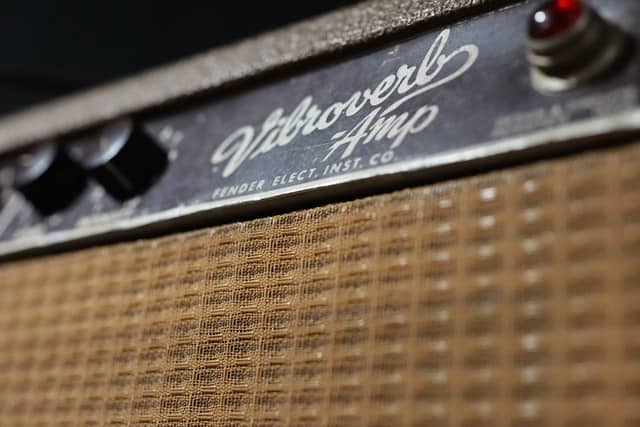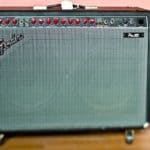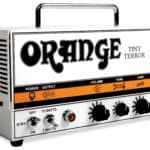When it comes to dust, the parts of your amp that are most likely to take damage are the moving parts and electronics, too bad that’s mostly what your amp is made out of.
Depending on the kind of amp you have, dust buildup can have different effects. Tube amps can overheat and solid-state amps can wind up with power loss. Overall, dust can be pretty bad for your amp in high doses, and you should take action to prevent it from building up.
We’ve covered whether dust can damage your guitar in another post, but is it the same story for your guitar amp?
Are the approaches one and the same or does your amp have its own problems related to dust?
Stick with me to find out!
What are the most sensitive parts to dust on a guitar amp?
It’s different for each amp type. Let’s take a look at the two most common types of amps:
Tube amps
Tube amps generally rely on being cranked up for their overdrive sound, to do this, the filaments have to heat up. Some tube amps even have fans built in for this.
Other parts include their insulators, smaller components, and of course their tubes.
Tube amps also have a lot of independent parts that have small spaces where dust can build up over time. Dust in the small cracks of your gear is never a good thing.
Solid-state amps
Solid-state amps don’t run on the heavy and fragile parts that tube amps do, but their circuit boards and transistors are still susceptible to dust damage.
In General
Dust also absorbs moisture and can encourage rust development over time. Your amp is made up of many electronic parts and rust will affect all of them negatively.
Can dust affect an amp’s performance?
Yes. If your amp is covered in dust, it could overheat (as stated about tube amps). This will cause a slew of issues. Firstly it could cause inconsistent tone output, but over time, if left unchecked, dust can affect your amp’s ability to produce any good tone at all.
The same goes for power leakage. Your guitar has a voltage output limit and by having power leaks, you put more strain on the circuits in your amp. This will decrease its overall lifespan.
Overall, dust on your amp is a bad idea and should be tended to often.
Can dust buildup damage a guitar amp?
As with sensitive parts, the problems are different for different amps
Tube Amps
The many parts of tube amps are quite susceptible to dust damage. Mainly due to overheating.
As dust accumulates, it becomes like a blanket that holds in the heat that tube amps are known for creating in order to get their sound. Too much dust and your amp can overheat. This leads to all sorts of issues: brittle insulators, cracked components, blown tubes, and on and on.
Solid States
Depending on the type of dust that you’re around, the dust could have a slightly conductive property, this will cause power leakage on your amp. This will generally affect its performance.
This is especially problematic on Solid State amps as they tend to have a lower voltage output limit when compared to tube amps. This can be considered a form of damage when dust is left to accumulate over time, causing power loss.
In general, though, dust usually leads to rust, which does not do well with electronics of any sort.
How to prevent dust from building up on your amp?
Just like with any equipment, when it’s not in use, it’s best to store your amp away. You may get a case for it or you could cover it with a plastic sleeve. If you don’t have a plastic sleeve, you can use a spare towel, that works just as well.
You should clean your amp regularly if you can, and try to make it a part of your guitar’s routine maintenance so that you kill two birds with one stone.
How to clean a dusty guitar amp?
Before you do any maintenance or cleaning, you should first make sure your amp is unplugged. Next, to clean your amp, you’ll need a damp rag and a bit of water ( to keep the rag damp).
You’ll want to wipe all the outside areas and then wipe any exposed moving parts like knobs and wires, but make sure not to wet your rag too much as you wouldn’t want to get any electrical parts wet.
When cleaning the inside of your amp, you’ll want to keep any liquids away from it. In this case, you can use a small manual blower for this or a pressurized air can. You should also clean your amps vents while you’re at it.
Using air blowing to clean off the dust won’t remove all the dust, but it’ll remove most of it. This is also a much safer way to remove dust from electrical components rather than wiping them down.
Here’s a video you can also follow along to

Hello there, my name is Ramiro and I’ve been playing guitar for almost 20 years. I’m obsessed with everything gear-related and I thought it might be worth sharing it. From guitars, pedals, amps, and synths to studio gear and production tips, I hope you find what I post here useful, and I’ll try my best to keep it entertaining also.





